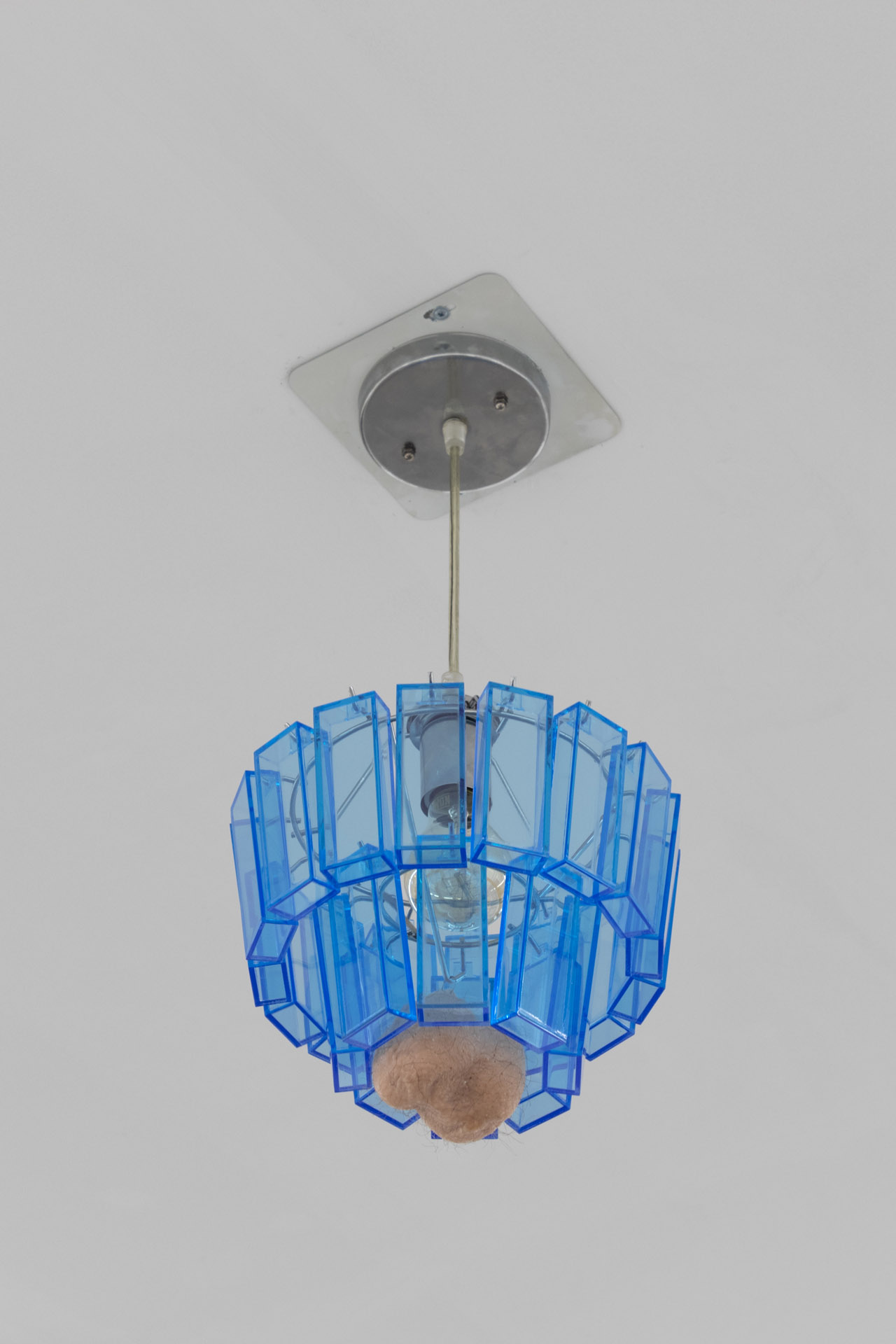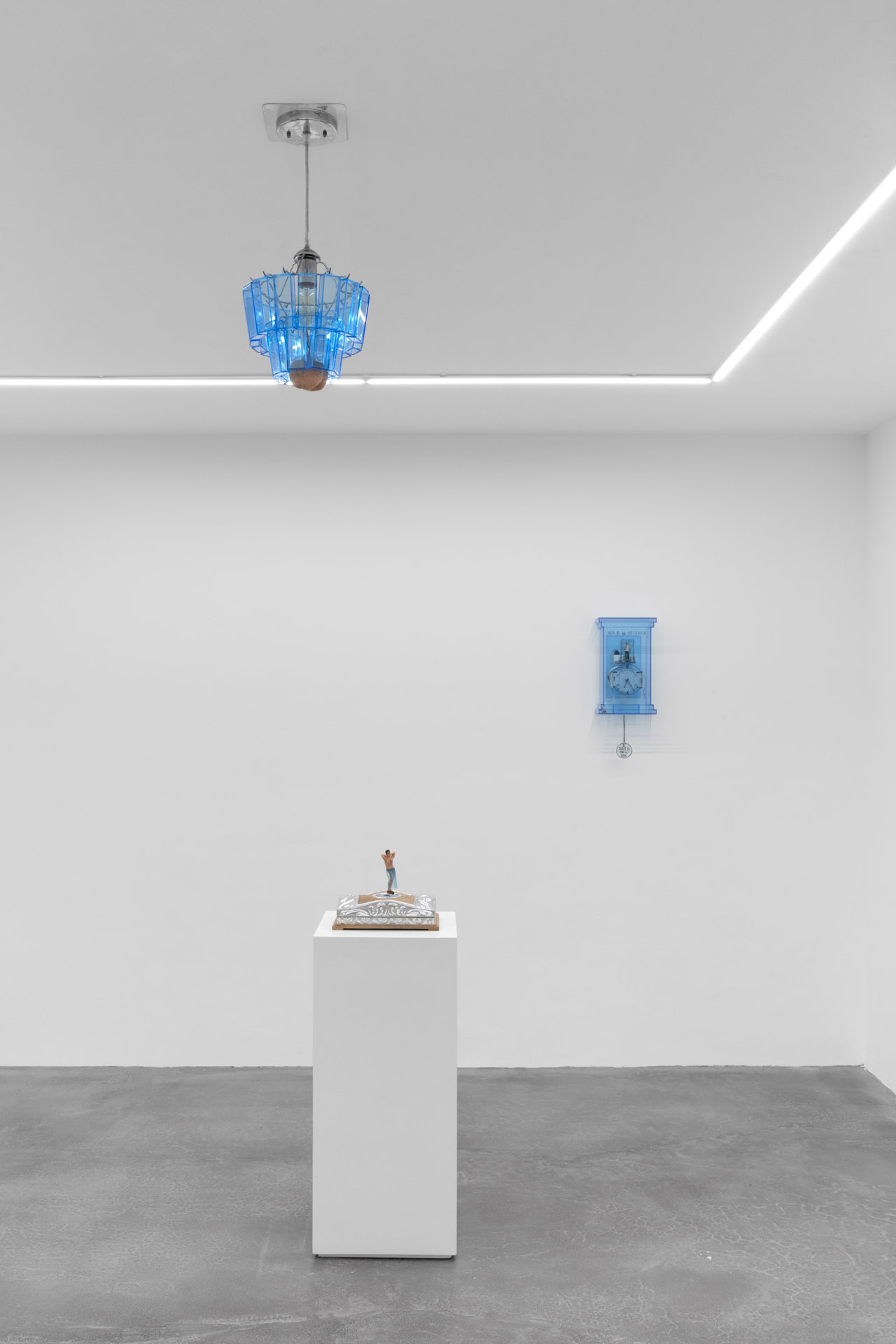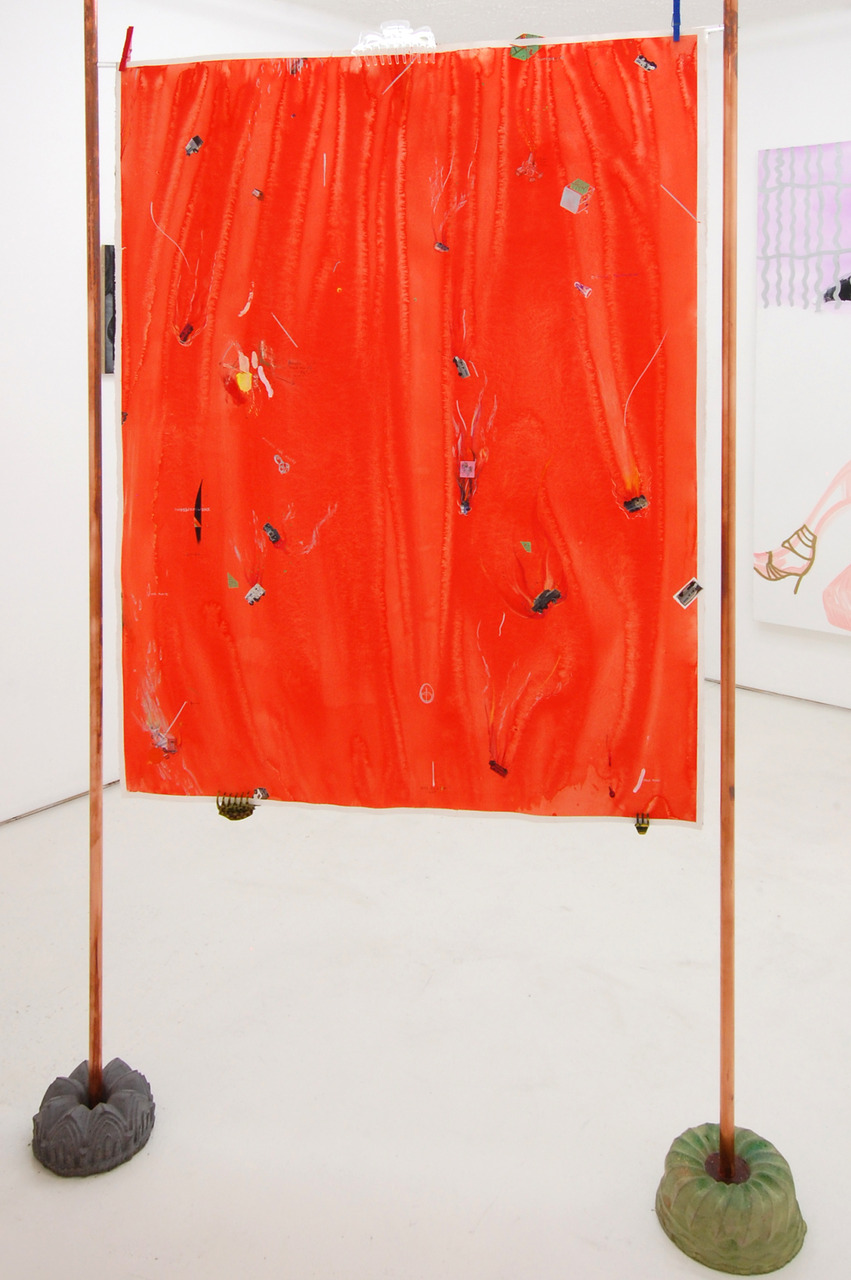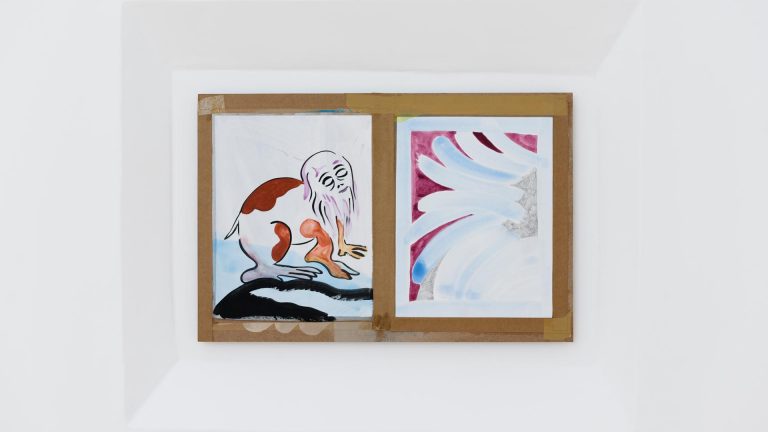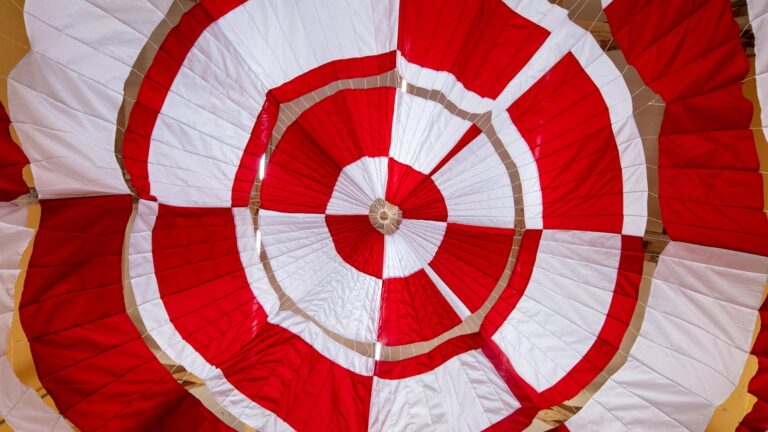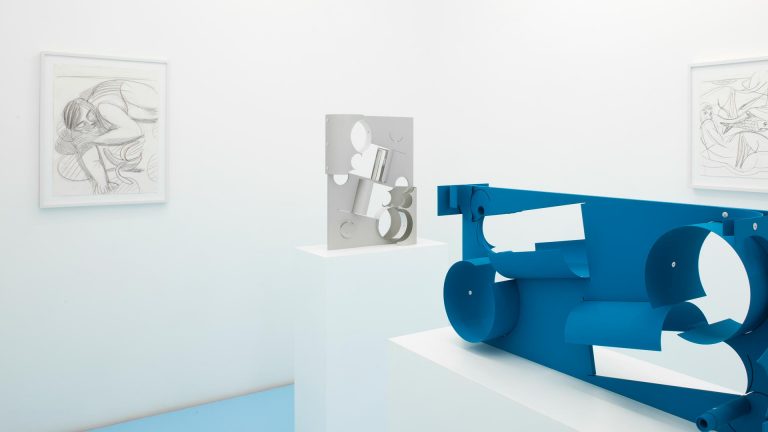Artists: Rafa Esparza, Julio Galán, Romeo Gómez López, Bárbara Sánchez-Kane, Ana Segovia, Frieda Toranzo Jaeger
Exhibition title: Para Morelio
Curated by: Deslave (Mauricio Muñoz, Andrew Roberts) and Ana Pérez Escoto
Venue: PEANA, Mexico City, Mexico
Date: October 9, 2021 – January 15, 2022
Photography: Michelle Lartigue / all images copyright and courtesy of the artists and PEANA, Mexico City
PEANA is pleased to present Para Morelio, a group show that originates from a re-reading of Julio Galán’s body of work and the Neo-Mexicanism painting history. Curated by Deslave (Mauricio Muñoz and Andrew Roberts) and Ana Pérez Escoto, the exhibition gathers the work of Rafa Esparza, Romeo Gómez López, Bárbara Sánchez-Kane, Ana Segovia, Frieda Toranzo Jaeger and Julio Galán through a queer perspective.
The works communicate with each other as a whole ensemble, articulating and interchanging expressions of desire, humor, play and affection through the self-representation of non-normative sexes and genders. Para Morelio traces observational lines to the past and the present of Mexican artistic production, overlapping times and implementing an intergenerational dialogue to understand queerness not as a monolithic experience, but as a state where race, gender and class intersect non-hegemonic identities.
For Galán, gender is an artifice, it is a malleable image and matter in a ludic exercise of representations that tear down traditional notions of sexual identity, and they question the ideological apparatus that oppress them: family, state and religion. For a start, his paintings establish tensions arising from guilt and flagellation of self-identity recognition. Bodily fluids and wounds are half-revealed with shame, hidden under robes, boxes and curtains that shelter everything that supposedly is not to be talked about or looked at.
Secondly, Galán recognizes the performatic potency of indeterminations in attire. Framing his scenes and portraits under an aesthetic that confronts the infantile with the grim, the tender with the violent, he places dolls as protagonists in atmospheres that may well be dollhouses. It is there that his pictorial strategy is observed, where he overlaps garments, toys and objects of diverse genre in an amalgam that unfolds traditional notions of sexual identity.
Under both spectrums of production, in that which portrays dishonor, as well as in that which celebrates otherness, the body, the home and the artifacts are revealed as central elements. Para Morelio retakes these three motifs in the visual narratives of the artist and constructs with that the discursive lines that shape the three exhibition rooms of the show.
In the practices of Rafa Esparza, Ana Segovia and Frieda Toranzo-Jaeger, the artists establish a close relationship with the body and the racial, nationalistic and gender norms it carries. Esparza works with adobe –blocks of soil that are used to build homes in some rural zones of Mexico-, which is made in collaboration with his family. This material works as a recipient for a series of portraits where family and queer friends of the artist with mestizo ascendency are shown with their garments in act of empowerment. In his works, more than rendering shadows, Esparza omits skin coloration and exposes the brown color of adobe to represent the faces of his loved ones.
Segovia operates through an archive of Mexican golden-age movie photograms that belongs to her family. Through an incisive analysis where she recognizes the symbols that influenced in the construction of Mexican masculinity, she exerts a series of actions that dismantle this hegemony and reveals their misogynous codes. The artist directs the spectator’s gaze to the mannerisms, homoeroticism and hidden gestures in the post-revolutionary culture disseminated by the film industry.
In her paintings, Toranzo-Jaeger takes the violent and fast machines that have been associated with masculinity by excellence: cars. She transforms them into spaces of eroticism, radical tenderness and power, where bodies of women take the seat in activities that range from the sexual to that of enjoyment. In the canvases, embroidery details are seen, by that, employing a material historically linked to manual works related to women. Esparza, Segovia and Toranzo-Jaeger display the bodies as recipients of tensions, they relieve them or place them in greater friction by the use of materials and images with a strong historical charge.
Galán and Bárbara Sanchez-Kane share an interest for attire as a performative artifact, and home as a place where relationships of care or submission are revealed. In their dresses, suits, sculptures and paintings, Sánchez-Kane erases the frontiers between who can wear what, how and for what purpose, building and destroying with that binary gender normativity. She generates a revision of the history of fashion and industrial design, placing them under a lens that augments their feminine or masculine connotations to subsequently delete, mix or evidence them.
The sculptures of Romeo Gómez López point to the artifacts as recipients and catalyzers of desire. His works, taking elements from popular culture, materialize in the shape of little dioramas, dolls and interactive pieces that make visible dynamics of sexual expression and oppression. The artist focuses on the objects’ libidinal value and explores with that their potency as generators of a queer sensibility. Sanchez-Kane and Gómez López address their production from the animism of things and the languages they carry with them from being fabricated inside normative societies.
Para Morelio gathers six artists under the historical revision of one of them, but it’s conceived as a conversation without hierarchies with the purpose of delving into diverse gender tensions in Mexico. It makes evident that there isn’t only one way of conceiving identity construction and dissident sexualities, and that these are formed jointly with race, class, desire, home, objects, popular culture and nationality.
-Deslave
Para Morelio, 2021, exhibition view, PEANA, Mexico City
Para Morelio, 2021, exhibition view, PEANA, Mexico City
Para Morelio, 2021, exhibition view, PEANA, Mexico City
Para Morelio, 2021, exhibition view, PEANA, Mexico City
Para Morelio, 2021, exhibition view, PEANA, Mexico City
Para Morelio, 2021, exhibition view, PEANA, Mexico City
Para Morelio, 2021, exhibition view, PEANA, Mexico City
Para Morelio, 2021, exhibition view, PEANA, Mexico City
Para Morelio, 2021, exhibition view, PEANA, Mexico City
Para Morelio, 2021, exhibition view, PEANA, Mexico City
Para Morelio, 2021, exhibition view, PEANA, Mexico City
Para Morelio, 2021, exhibition view, PEANA, Mexico City
Ana Segovia, Retrato, 2021, Oil on canvas, 72 x 48.5 x 3.7 cm. 28.3 x 19 x 1.4 in
Ana Segovia, You Are Gonna End Up With Me, 2021, Carved quarry, clothing and oil on paperboard, 56 x 44 x 143 cm. 22 x 17.3 x 56.2 in
Ana Segovia, You Are Gonna End Up With Me, 2021, Carved quarry, clothing and oil on paperboard, 56 x 44 x 143 cm. 22 x 17.3 x 56.2 in
Ana Segovia, You Are Gonna End Up With Me, 2021, Carved quarry, clothing and oil on paperboard, 56 x 44 x 143 cm. 22 x 17.3 x 56.2 in
Frieda Toranzo Jeager, Diptico, 2019, Oil on canvas with embroidery, 142 x 318 x 2 cm. 55.9 x 125.1 x 0.7 in.
Frieda Toranzo Jeager, Not Such A Democratic Confinement, 2021, Oil on canvas with embroidery, 50 x 60 x 2 cm. 19.6 x 23.6 x 0.7 in
Frieda Toranzo Jeager, Not Such A Democratic Confinement, 2021, Oil on canvas with embroidery, 50 x 60 x 2 cm. 19.6 x 23.6 x 0.7 in
Frieda Toranzo Jeager Dreamliner II, 2019, Oil on canvas with embroidery, 142 x 123 x 2.5 cm. 55.9 x 48.4 x 0.9 in.
Frieda Toranzo Jeager Dreamliner II, 2019, Oil on canvas with embroidery, 142 x 123 x 2.5 cm. 55.9 x 48.4 x 0.9 in.
Frieda Toranzo Jeager, Water Lily, 2019, Oil on canvas, 100 x 190 x 3 cm. 39.3 x 74.8 x 1.1 in.
Rafa Esparza, Tanta curva, 2021, Acrylic on adobe, 155 x 157 x 4 cm. 61 x 61.8 x 1.5 in.
Rafa Esparza, Tanta curva, 2021, Acrylic on adobe, 155 x 157 x 4 cm. 61 x 61.8 x 1.5 in.
Romeo Gómez López, Hora de la Jotilencia, 2021, Acrilico azul fluorescente, resina, baterias, pintura acrílica, mecanismo de reloj cucú, 59 x 29 x 12 cm. 23.2 x 11.4 x 4.7 in.
Romeo Gómez López, Hora de la Jotilencia, 2021, Acrilico azul fluorescente, resina, baterias, pintura acrílica, mecanismo de reloj cucú, 59 x 29 x 12 cm. 23.2 x 11.4 x 4.7 in.
Romeo Gómez López, Blue Balls, 2021, Acrílico azul fluorescente, metal, silicón, pelo, foco, 60 x 25 x 25 cm. 23.6 x 9.8 x 9.8 in
Romeo Gómez López, Blue Balls, 2021, Acrílico azul fluorescente, metal, silicón, pelo, foco, 60 x 25 x 25 cm. 23.6 x 9.8 x 9.8 in
Bárbara Sánchez-Kane, Cadáveres amorosos, 2021, Rawhide, foam, metal, 86 x 52 x 62 cm. 33.8 x 20.4 x 24.4 in.
Bárbara Sánchez-Kane, Collapsed rooms I, 2021, UV flatbed print and acrylic on rawhide, 106 x 105 x 4 cm. 41.7 x 41.3 x 1.5 in.
Bárbara Sánchez-Kane, Collapsed rooms I, 2021, UV flatbed print and acrylic on rawhide, 106 x 105 x 4 cm. 41.7 x 41.3 x 1.5 in.
Romeo Gómez López, Reina del baile, 2021, Fluorescent blue acrylic, silicone, motor, wood, embossed, 20 x 30.5 x 21.5 cm. 7.8 x 12 x 8.4 in.
Romeo Gómez López, Reina del baile, 2021, Fluorescent blue acrylic, silicone, motor, wood, embossed, 20 x 30.5 x 21.5 cm. 7.8 x 12 x 8.4 in.
Julio Galán, Untitled (Cat eyes), 1992, Pastels on paper, 100 x 80 cm. 39.3 x 31.4 in.
Julio Galán, My Foolish Heart, 1992, Collage, printed paper, paper, synthetic resin and oil on canvas, 225 x 180 x 4 cm. 88.5 x 70.8 x 1.5 in.
Julio Galán, My Foolish Heart, 1992, Collage, printed paper, paper, synthetic resin and oil on canvas, 225 x 180 x 4 cm. 88.5 x 70.8 x 1.5 in.
Julio Galán, El ropero de Sofia, 1983, Oil on canvas, 174 x 139 cm. 68.5 x 54.7 x 3.1 in.
Julio Galán, Atrapado en el elevador, 1991, Oil on canvas, 174 x 139 cm. 68.5 x 54.7 x 3.1 in.
Autoretrato doble, 1991, Pastels on paper, 49.5 x 69 cm. 19.4 x 27.1 in.
Julio Galán, Quiere llorar, quiere llorar!, 1986, Pastels on paper, 76 x 55 cm. 29.9 x 21.6 in.

